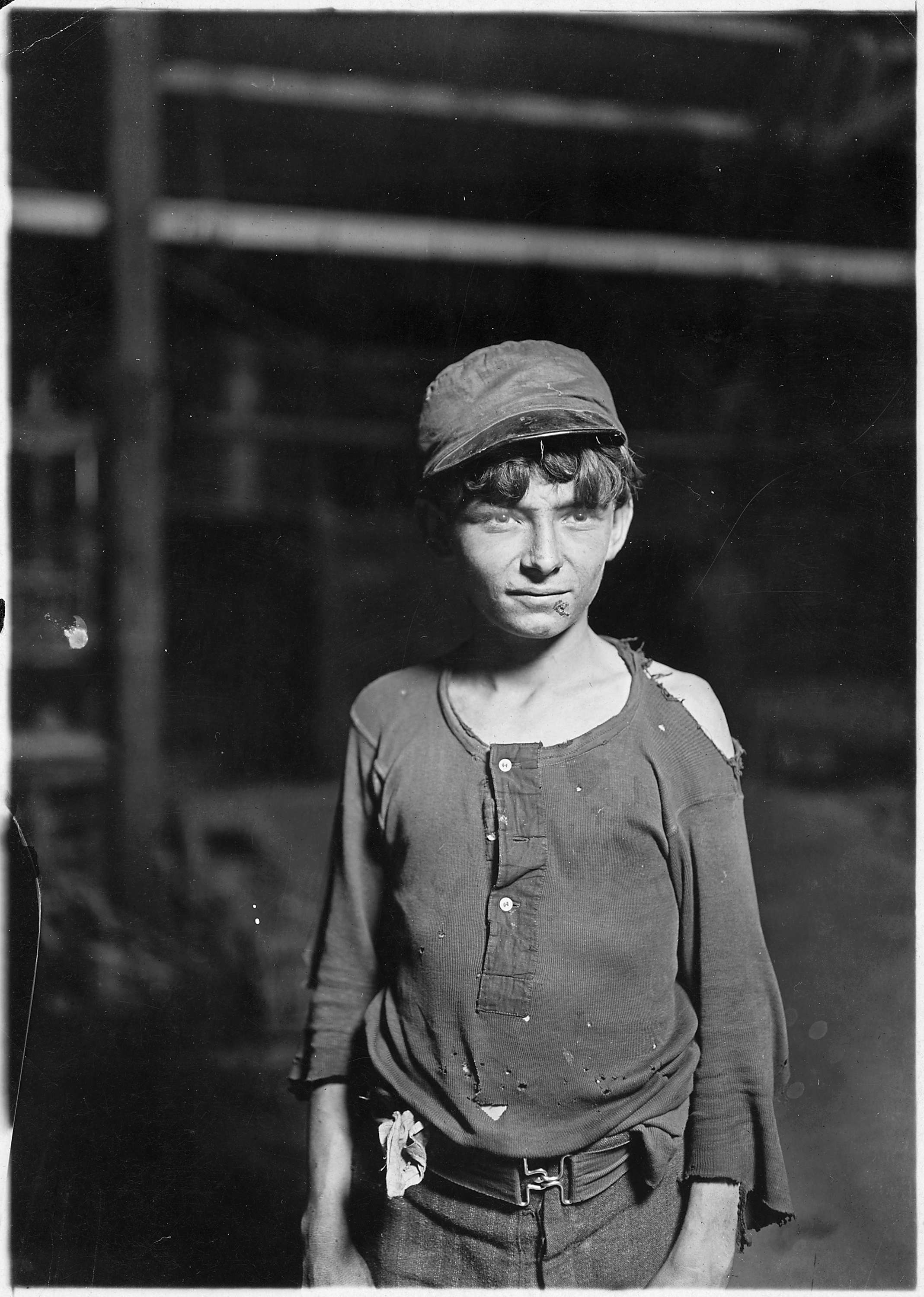A typical glass works boy, night shift. Said he was 16 years old. 1 A.M. Indiana
8/1908
Add to Favorites:
Add all page(s) of this document to activity:

The growth of industry after the Civil War increased the demand for workers and pulled more and more children into the labor force. By 1910, children made up 18.4 percent of the total labor force. The National Child Labor Committee (NCLC), in New York City began investigations with child labor conditions in coal mines, capitalizing on the public concern raised during the nationwide coal miners' strike of 1902. Later, NCLC investigations centered upon the glassmaking industry, textile mills-especially in the South-and the canning industry. Eyewitness accounts produced at the beginning of the 20th century detailed the kind of working conditions of child laborers that the NCLC was investigating and publicizing. One such account, taken from John Spargo's The Bitter Cry of the Children (New York, 1906), describes conditions in a glass factory: I shall never forget my first visit to a glass factory at night...the boys employed, about forty in number, at least ten of whom were less than twelve years of age. It was a cheap bottle factory, and the proportion of boys to men was larger than is usual in the higher grades of manufacture. The hours of labor for the "night shift" were from 5:30 pm to 3:30 am.... Then began the work of the "carrying-in boys," sometimes called "carrier pigeons," [who] took the red-hot bottles from the benches, three or four at a time upon big asbestos shovels to the annealing oven.... The work of these "carrying-in boys," several of whom were less than twelve years old, was by far the hardest of all. They were kept on a slow run all the time from the benches to the annealing oven...was one hundred feet, and the boys made seventy-two trips per hour, making the distance traveled in eight hours nearly twenty-two miles. Over half of these boys varies from sixty cents to a dollar for eight hours' work. In 1908 the NCLC hired Lewis W. Hine to investigate and to photograph the conditions of working children. Text adapted from “Three Photographs of Children At Work, Circa 1908” in the February 1982 National Council for the Social Studies (NCSS) publication Social Education.
This primary source comes from the Records of the Children's Bureau.
National Archives Identifier: 523081
Full Citation: Photograph 102-LH-90; A typical glass works boy, night shift. Said he was 16 years old. 1 A.M. Indiana; 8/1908; National Child Labor Committee Photographs taken by Lewis Hine, ca. 1912 - ca. 1912; Records of the Children's Bureau, Record Group 102; National Archives at College Park, College Park, MD. [Online Version, https://www.docsteach.org/documents/document/a-typical-glass-works-boy-night-shift-said-he-was-16-years-old-1-am-indiana, April 26, 2024]Rights: Public Domain, Free of Known Copyright Restrictions. Learn more on our privacy and legal page.



